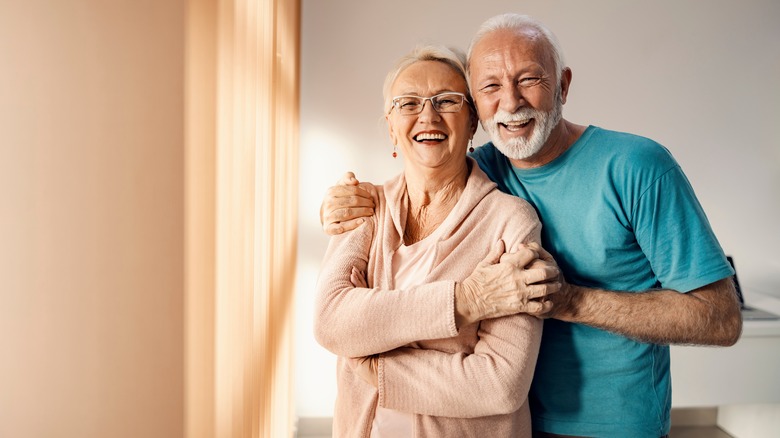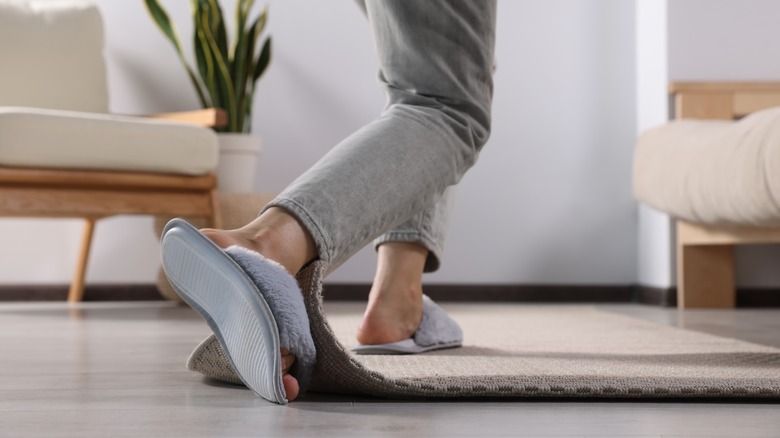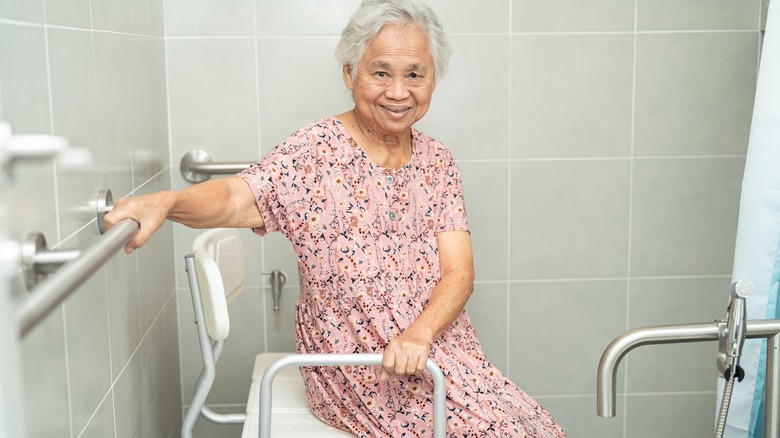Easy Ways To Make A Home Safer For Seniors
Are you or a loved one planning to stay in your home as you age? According to a survey by AARP, the vast majority (77%) of adults aged 50 or older want to age in place, meaning they desire to live in their own homes for as long as possible. There are many reasons why people may want to avoid or postpone moving into a nursing home or assisted living, but one big reason is that seniors are at high risk for developing depression, especially in nursing homes (via Nursing Home Abuse Center). Staying independent is an important goal for many seniors, but living independently comes with risks, especially if the senior person's home isn't suitable.
Do you know an older loved one who has fallen or accidentally injured themselves while at home? Are you concerned about what could happen if nobody is nearby to help? You can't be there with your loved one all the time, but most home accidents and injuries can be prevented by taking a few safety precautions. Check out these simple ways you can make your or your loved one's home much safer.
Reducing safety hazards
When making a home safer for seniors, it's important to recognize and eliminate any safety hazards. Slip-and-fall hazards, in particular, are some of the most dangerous items to have in the home. According to the Centers for Disease Control and Prevention, falls were the leading cause of injury death for adults aged 65 or older in 2019. There are many reasons why an older person may slip or fall, including poor eyesight, health conditions like diabetes, or age-related muscle loss. While it's difficult to prevent falls from medical causes like these, you can still provide a safer living environment by removing trip hazards from the home.
Walk through the house and look for any rugs, furniture legs, or electrical cords that could present a tripping hazard for older adults walking by. In addition to using streamlined furniture and tucking away loose cords, it's crucial to deal with overwhelming clutter on the floor, such as boxes, clothes, books, or blankets. As many as 80% of falls happen in the bathroom, and these are more likely to result in serious injury or head trauma due to hard surfaces (via Aging.com). For this reason, it's important to only use non-slip, low-profile mats on bathroom floors, and never use towels or slippery rugs.
Installing helpful features
After you have addressed existing safety hazards, it's time to start thinking about making the home safer. Because falls in the bathroom are so common, adding handrails to the shower and toileting area should be one of your first considerations. In addition to rails, make sure your loved one has access to a cell phone, landline, or emergency call button in the bathroom. They should keep the device nearby at all times in the bathroom, or if using a landline, make sure they can reach it from the floor if needed. Inside and outside of the bathroom, ensure all pathways through the home are well-lit, and provide more handrail supports near stairwells and hallways as needed.
In addition to trip causes, look out for hidden fire hazards like blocked dryer exhaust vents. Everyone should have fire alarms in their home, but especially older people, who can be up to five times as likely to die in a house fire (per Age Safe America). Older people are safest when they're connected with their community. Make sure a nearby relative or trustworthy neighbor has a key to their house, bathrooms, and bedrooms just in case they happen to fall behind a locked door. Finally, remember to call your loved one and check in regularly, or have them send you a text message at the same time every day for their safety.


